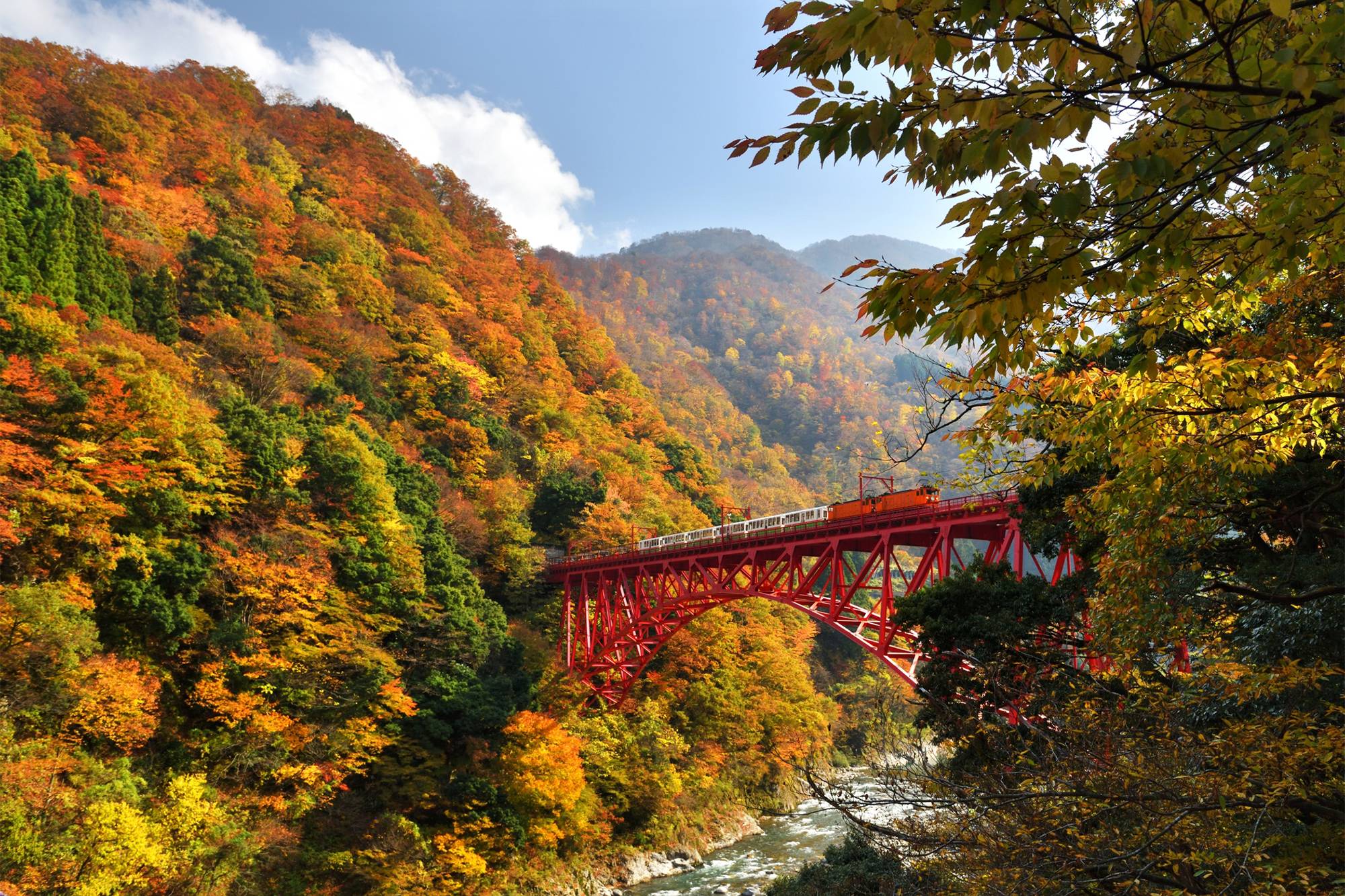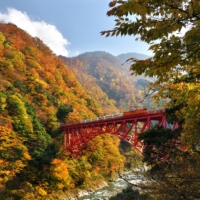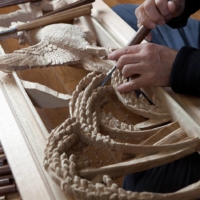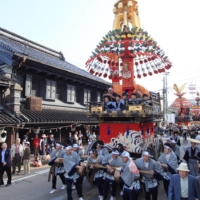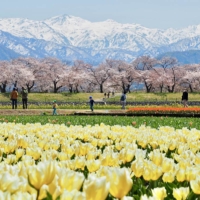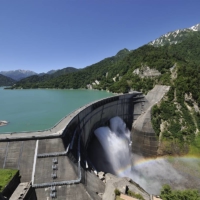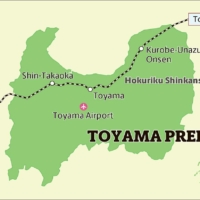From May 19 to 21, Japan will preside over the G7 Summit in Hiroshima, which will focus on the global economy and other key issues. Around the same time, other conferences are scheduled all over Japan, with Toyama Prefecture having co-hosted the Education Ministers’ Meeting with Kanazawa from May 12 to 15. Given the topic, “Education after COVID-19 Pandemic,” now seems like the perfect time to talk about everything that this prefecture in Honshu’s central Chubu region has to offer.
Surrounded by mountains on three sides and facing the Sea of Japan to the north, Toyama is a place of scenic beauty with its own distinctive cuisine, majestic landscapes and traditional crafts. It is also easily accessible from major cities, such as Tokyo, Nagoya or Osaka, truly living up to its name, which, appropriately, contains the character for “abundance.”
Bountiful nature
One of the most picturesque places in the prefecture is the Tateyama Kurobe Alpine Route, a passage through Japan’s Northern Alps stretching from Tateyama in Toyama to Omachi in Nagano Prefecture. It’s probably best known for its towering snow walls on the Tateyama Murodo Plateau, which flank a public road and can reach up to 20 meters in height, lasting into June. The route also boasts a long fall foliage season that begins in late September at higher elevations and in late October at lower elevations, making this one of the few places in Japan where visitors get to enjoy beautiful autumn leaves for up to a month and a half.

Another famous sight along the Tateyama Kurobe Alpine Route is Kurobe Dam. At 186 meters, it is the tallest dam in Japan, taking seven years and over ¥51 billion to complete. This marvel of engineering today attracts both domestic and international tourists because of its awe-inspiring water-release events between June and October. These events discharge up to 15 tons of water per second and visitors can witness the grand display up close from a viewing deck or the Rainbow Terrace observation plaza. Kurobe Lake, which was created by the dam and is the highest in the nation, can be enjoyed amid its natural surrounds from the Garve sightseeing boat.
But Toyama’s natural treasures can also be found at lower altitudes, like in the Kurobe Gorge, a deep V-shaped valley carved into the Northern Alps. One of the best ways to traverse it is via the Kurobe Gorge Railway, operating from mid-April to the end of November. The scenic 20-kilometer ride along the Kurobe River takes around 80 minutes one way and gives passengers majestic views of Toyama’s seasonal displays of nature. The railway is at its best in autumn, when the entire valley is alight with burning-red fall foliage.
Winter, on the other hand, is the best time to explore the Shogawa Gorge by boat. Designated as a prefectural park, the gorge offers amazing sights all year long and transforms during winter into something straight out of a Japanese ink painting, especially when enjoyed from the water. Various cruises with heated cabins operate in the area, taking visitors into a snow-white world of wonder like nothing they’ve ever seen before. A boat is also the only way to reach Omaki Onsen Kanko Ryokan, a secluded hot spring inn on the shores of the Sho River.

In spring, tulip fans should head over to Tonami’s Tulip Fair, which showcases 3 million tulips in 300 varieties during the annual event, many of which are displayed in massive, breathtaking installations. Another place in Toyama that’s caught tulip fever is Asahi, the birthplace of the so-called Asahi Funakawa Spring Quartet, a name given by a local photojournalist to the sight of red tulips, pink cherry trees, and yellow rapeseed flowers blooming beautifully together in early April against the backdrop of the snow-covered peak of Mount Asahi. This vivid scenery must truly be seen firsthand to be fully appreciated.
A window into Japan’s past
Gokayama is a nature-rich area in the southwestern corner of Toyama. Dotted with historic mountain villages, it was recognized in 1995 as part of the UNESCO Historic Villages of Shirakawa-go and Gokayama World Heritage Site, a beautiful, expertly preserved example of gassho-zukuri architecture. Translating to “hands joined together in prayer,” this style got its name from the steep shape of the Gokayama houses’ thatched roofs, which were originally designed to protect the structures from heavy snowfall. Gokayama is believed to have first been settled more than 4,000 years ago, making it a fascinating place to experience Japan’s original landscape.

Speaking of UNESCO, the organization also recognizes 33 festivals as part of Japan’s Intangible Cultural Heritage, and three of them happen to take place in Toyama Prefecture: the Takaoka Mikuruma-Yama Festival, the Johana Hikiyama Festival, and the Uozu Tatemon Festival. All three involve beautifully decorated, elaborate floats being paraded through towns and cities to the sound of music, as well as other fun activities. Also worth mentioning is the Owara Kaze no Bon Festival, held from Sept. 1 to 3 in Yatsuo, Toyama, which includes performances of a 300-year-old emotionally rich dance performed to the wistful accompaniment of classical Japanese instruments.
Takaoka bronzeware art, another integral part of Toyama’s heritage, boasts an even longer history, having been perfected and handed down over the last four centuries. One of their grandest examples is the Great Buddha of Takaoka. Completed in 1933 after 26 years, the nearly 16-meter-tall, 65-ton statue is one of Japan’s greatest representations of the Buddha, considered an equal to those found in Kamakura and Nara.

Toyama also knows how to work with wood, as it’s where Inami wood carving was developed over 250 years ago. The technique, which hails from the Inami area of Nanto, is characterized by the use of high-quality natural wood and 300 different types of chisels and carving knives to create dynamic 3D designs. During its heyday, Inami wood carving was widely used for decorating Japanese homes and places of worship, such as the Inami Betsuin Zuisenji temple, the main hall of which, rebuilt in 1885, is one of the largest wooden buildings along this stretch of the Sea of Japan.
All those treasures and more await visitors in Toyama.
This page is sponsored by the Toyama Prefectural Government.



